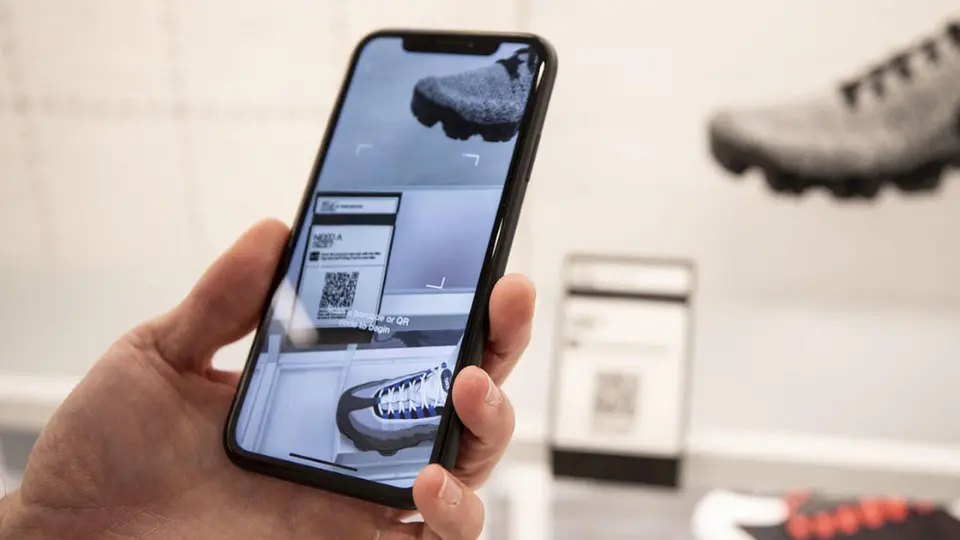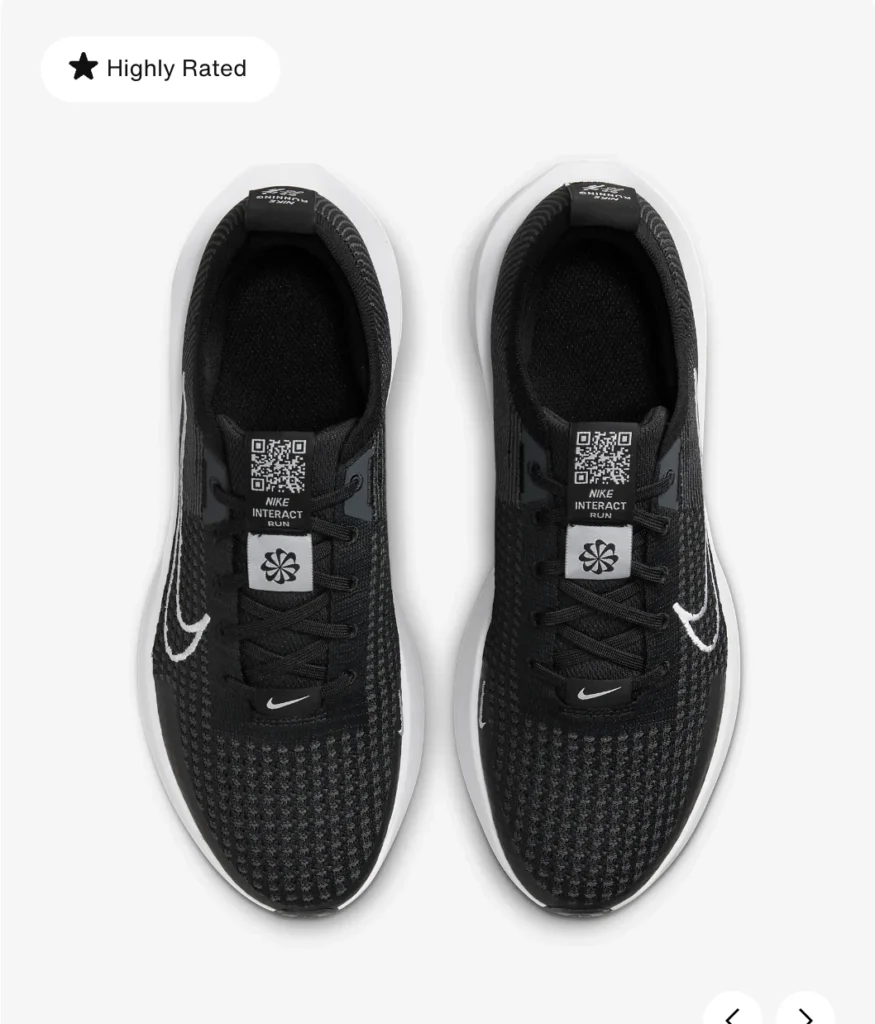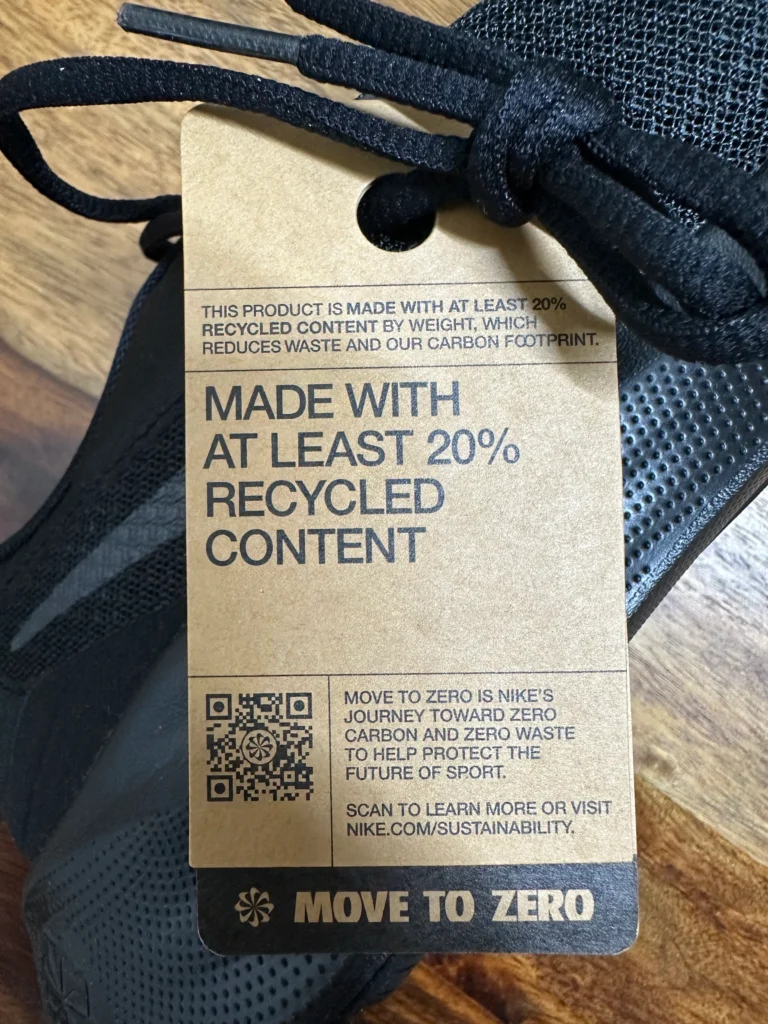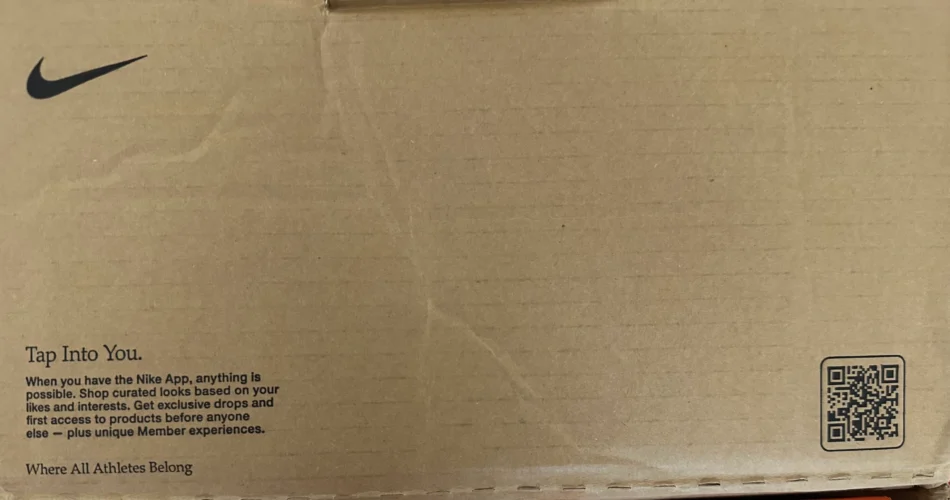Nike, the well-known global athletic brand, is continuously on the lookout for the latest industry trends, marketing, and communications.
And, Nike’s marketing strategy is worth looking forward to.
With the emergence of digitalization, they never miss out on integrating technology into their products.
And they’re doing so with QR Codes too. Keep reading till the end to learn how Nike allowed QR Codes to create a seamless user experience.
A. Nike QR Codes
Today, when everyone has a smartphone, there’s no better way to engage your audience than getting them to use their phones.
To do it, Nike is leveraging QR Codes to enhance customer experience, share product information, and more.
Let’s look at some of the most successful Nike QR Code campaigns.
B. Successful Nike QR Code campaigns worth sneaking into
1. Nike by Melrose’s loyalty campaign
Back in 2018, Nike opened a new store in Los Angeles—Nike by Melrose—with a unique approach to incentivize their loyal customers.
They used a vending machine —Nike Unlock Box (accessible only by Nike members)—in their store.
Members just had to scan their NikePlus Membership QR Code.
Doing so gave them free small products, like socks, from the vending machine every 14 days.
And, no mandatory add-on purchase was required for every visit.
Key Insights:
Increased footfall: With each Nike member returning to the store for the freebie every 14 days, there was an increase in offline store visits
New sale opportunities: Even the non-Nike members bought products, became members, and received freebies. This led to a surge in sales
Larger Nike community: Helped Nike connect with their loyal customers by rewarding them with small items for free
Personalized experience: The store used data from the Nike app and membership database to create more personalized, phygital interactions
2. Nike’s “Scan Mannequin Look” initiative
Nike added a QR Code at the base of their full-athlete-styled mannequins.
Famous athletes often styled Nike Mannequins from head to toe based on their fashion style and appearance.

Image Source: Highsnobiety
Offline store visitors could use a scanner to read the Nike App QR Code & see athletes wearing outfits check available sizes, and request try-ons.
Key Insights:
Omni-channel experience: Nike created an immersive approach to allow store visitors to explore the showroom on their phone with a scan
Personalized shopping: Allowed visitors to book a trial online without talking to any store associate and get the requested product for a trial
Data-driven approach: Helped Nike stores identify the most scanned outfits, trends, and most selling items in their stores and ensure adequate inventory
Efficient in-store crowd management: Nike store associates managed to assist the visitors better based on their custom choices
3. The “Customize Your Nike Shoe” move
Nike allowed their customers to create more personalized shoe designs on their own. How?
They added a Website QR Code to the shoe boxes and other print materials.
After scanning, users were redirected to the Nike Customization Platform.
Customers became more creative and followed Create Your Own Nike Shoe Custom Design, just like Subway—create your own sub!
With this, Nike customers got more engaged and excited about their new Nike custom sneakers.
Key Insights:
Ease access to customization feature: Nike users can access the shoe customization feature easily with a single scan, offering a user-friendly experience
Personalized experience: Users got more creative, actively engaged, and built a sense of ownership while creating their masterpiece
Word-of-mouth promotion: Customers who personalized their sneakers posted on social media, resulting in the free and organic promotion of new functionality
Trend analysis: Nike was able to understand their audience’s color design and the trend better based on their custom demands
Increase in sales: This approach helped Nike set new prices, considering that Nike offered users customized shoes. This increased their shoe sales and demand parallel
4. Custom QR Codes on clothing tags
They collaborated with ad agency Wieden+Kennedy in 2008 and embedded QR Codes on clothing tags.
Post scanning, customers could read personalized poetry or unique stories every time.
Over 25,000 T-shirts had a custom QR Code and each QR got approximately ten scans.
In total, 2,50,000 scans were done. That’s a lot, right?
Key Insights:
Emotional connect: They got to build an emotional connection with the audience with small poems and stories (something for customers to remember them by)
Better customer engagement: Users scanned QR multiple times to read new poetry, resulting in an engaging experience
5. Building hype with the launch of Nike’s SNKRS app
Nike introduced exclusive sneaker releases only on the SNKRS app.
The SNKRS app used geolocation and QR Code technology in some retail stores and events.
Only those who were present in their selected offline store could scan a QR Code.
It also allowed them access to sneaker release updates, offers, and easy purchase options.
Subsequently, this increased the sense of urgency and excitement.
Key Insights:
Increase in demand and sales: Nike promoting selective sneakers in selected stores increased their demand, scarcity factor, and sales
More omnichannel interaction: The stores where QR Codes were added, saw more footfall driven by omnichannel sales
6. Interactive running with Nike’s Interact Run QRs

Source: Nike
The Nike Interact Run QR Code Shoe campaign was launched on October 9, 2023.
They embedded QR Codes only on selected running shoes.
On scanning, people could access running tips and track progress (if paired with the Nike Run Club App).
This campaign aimed to make the running experience interactive and more personalized with QR Codes.
Key Insights:
Kept audience hooked: Bridged the gap between runners and them tracking their progress with QR Codes being easily accessible on their shoes
Brand loyalty: Built a strong connection between the runner and the brand by making the shoe usage experience more personalized
7. Target new audience in China with Nike QR Codes
Nike launched a new clothing line — Off Court, to target young men in China.
The company added QR Codes to Nike sportswear, such as on tags and packaging.

China’s audience’s familiarity with the QR Codes helped Nike with high scan rates and create awareness about the new clothing line.
Upon scanning, users could access promotional content, unlock exclusive deals, product details, and much more.
Key Insights:
Product awareness: Nike QR Codes being accessible both offline and online helped them better with brand awareness
Tech savvy approach: Nike did its homework by understanding China’s tech awareness. They smartly integrated QR Codes that created curiosity amongst the audience to scan
Attract new audience: QR Codes helped engage young men with better user experience
C. How to create a branded QR Code like Nike using Scanova
Nike didn’t do the marketing. Rather, they did the SMART Marketing. They merged technology with innovation.
As read above, Nike has given some top-notch reasons to use QR Code technology in this touch-screen world.
For those interested in how to create a QR Code for similar campaigns, here’s a quick snapshot:
1. Open any browser and go to Scanova’s Free QR Code Generator
2. After that, select the QR Code category of your choice (based on your QR campaign goal)
3. Enter the required content fields of your QR Code and click on Download
Note: To use advanced features like custom design and enable tracking, you can sign up for the paid version
D. FAQ: Nike QR Codes
1. What does the Nike QR Code do?
Nike uses QR Codes in many ways. You name a marketing campaign goal, and they have ticked it off.
They use QR Codes to promote their brand, connect with users, boost sales, provide a good experience, etc.
2. How can I verify my Nike shoes are authentic using the QR Code?
Open a QR Code scanner or Google Lens on your phone. Then, scan a QR Code on your Nike shoes.
After scanning, if your landing page shows the original Nike website, then relax. You’ve got authentic Nike shoes.
3. How do Nike QR Codes enhance the in-store shopping experience?
Nike strategically incorporated QR Codes into its offline stores. It ensured that a personalized and interactive experience was offered.
For instance, Nike allowed visitors to scan a QR Code on mannequins and request a try-on.
Upon request, the store associate got a notification. They then provided the requested product and size to the visitor.
This, in turn, helped Nike associates improve the shopping experience and cater to more Nike members.
4. How does Nike use QR Codes to track customer behavior in stores?
Nike uses QR Codes as a part of their go-to marketing tool to track customer behavior and personalize their shopping experience accordingly.
Let’s understand this with a real case example—Scan Mannequin Look.
Picture this: Nike adds Dynamic QR Codes and places them in different sections of its stores.
Later, it uses QR Code tracking features to track customer behavior, such as number of scans based on date, product scanned, handsets used, etc.
This could them understand the products that draw the most attention (style, size, or color) based on customer segments.
7. What’s the purpose of the Nike QR Code Scanner?
The Nike QR Code Scanner is a tool that helps you:
- Get detailed product information
- Verify the authenticity of a product
- Discover size recommendations
- Check customization options
- Access exclusive content or special offers
8. What is the Nike QR Code Campaign?
Nike’s QR Code Campaign uses QR Codes to enhance the shopping experience. Here’s how:
- QR Codes on ads or posters may lead to exclusive product drops or promotions
- In-store QR Codes give instant access to product details
- Codes on packaging might unlock augmented reality (AR) experiences or behind-the-scenes content
9. How do I scan the barcode on Nike products?
To scan a barcode on Nike products:
- Use a barcode scanner app or a scanner at a Nike store
- Open the app or scanner and align the barcode within the frame
- At last, once scanned, you’ll see the product details or availability information
10. How can I use the Nike scanner for online shopping?
Here’s how you can use the scanner for online shopping:
- Open the Nike app or visit a Nike store
- Use the scanner feature (if available) to scan the QR Code or barcode
- Instantly view product colors, sizes, and purchase options online
11. Why does Nike use QR Codes on its products?
Nike uses QR Codes to:
- Make the shopping experience seamless
- Provide personalized product recommendations
- Prevent counterfeiting by verifying authenticity
- Combine digital campaigns with physical products for a unique customer experience
Conclusion
To wrap it up, Nike’s QR Code marketing strategy explained how they hooked their audience, pre and post-purchase.
If you’ve read till here, congrats. You’ve learned all about the famous Nike QR Code campaigns and are ready to take QR Codes on a new voyage for your unique use case.
Still, have a doubt? Let us know in the comments below.


